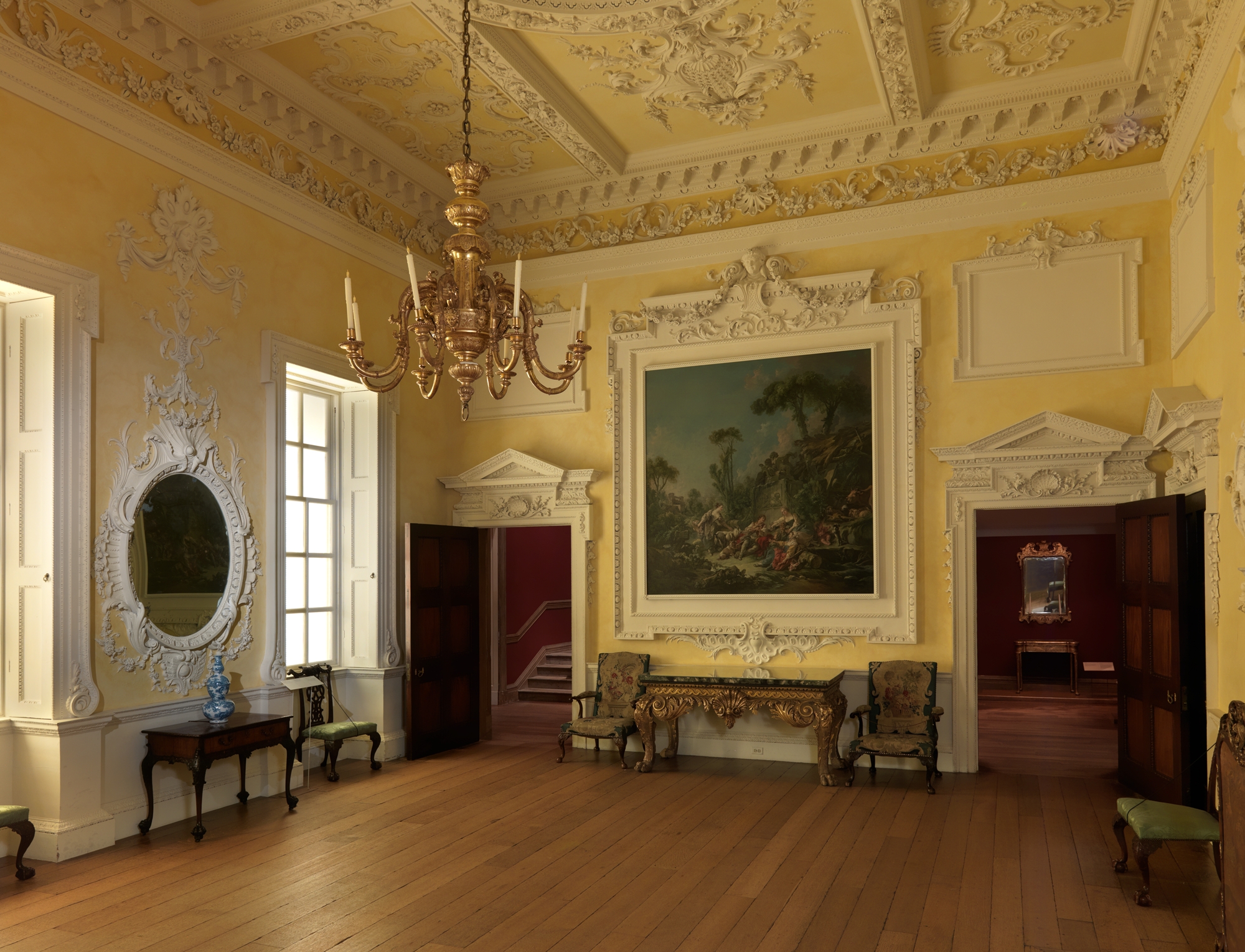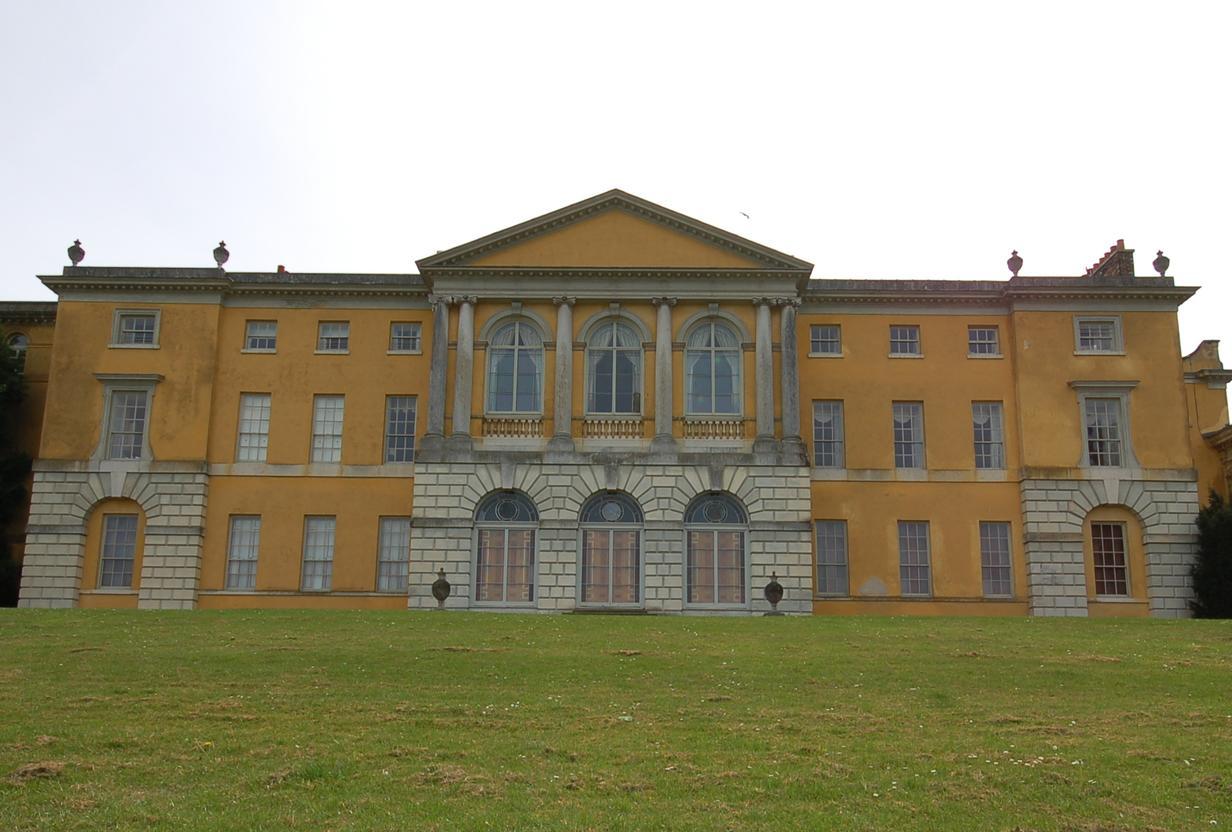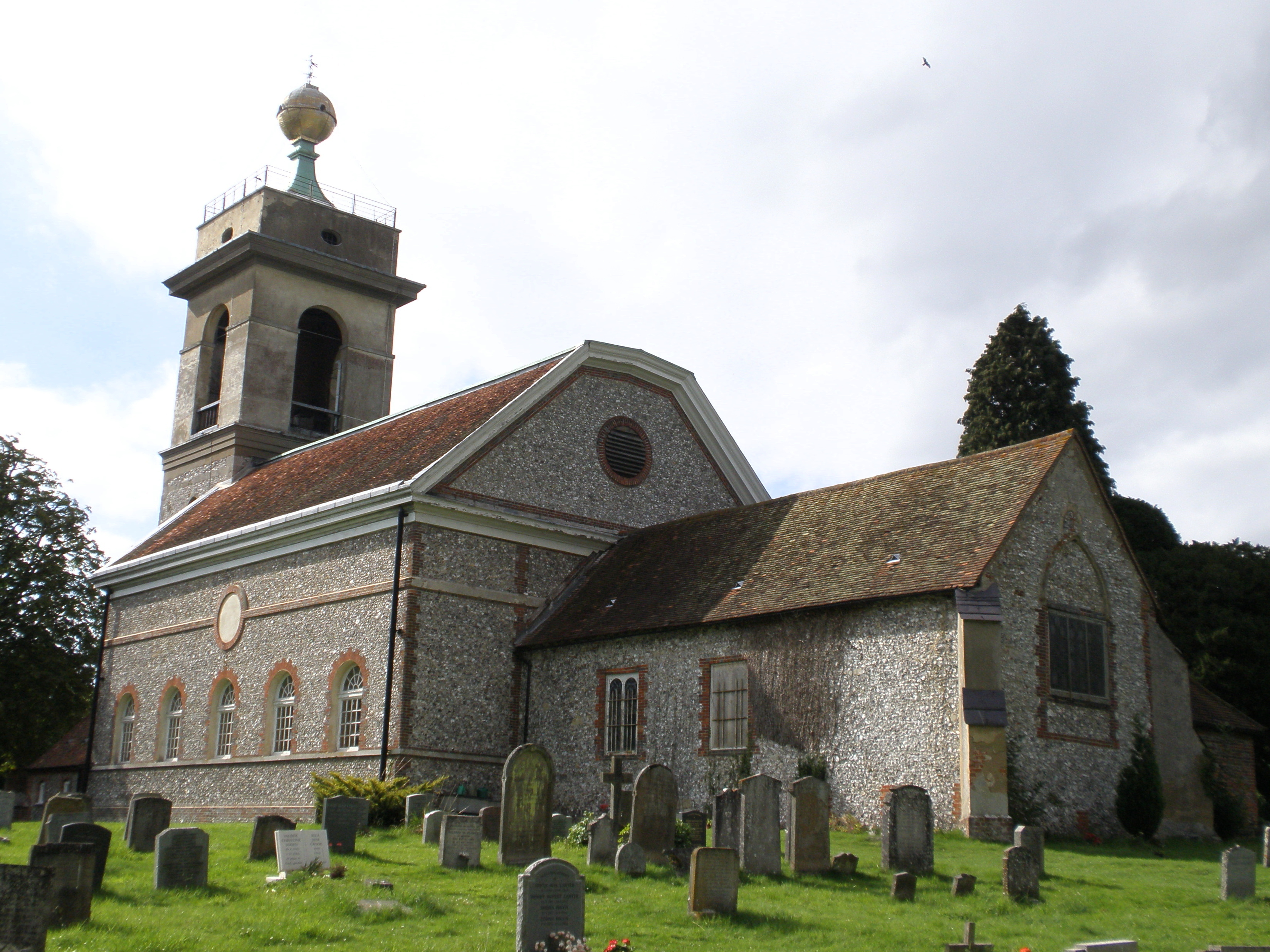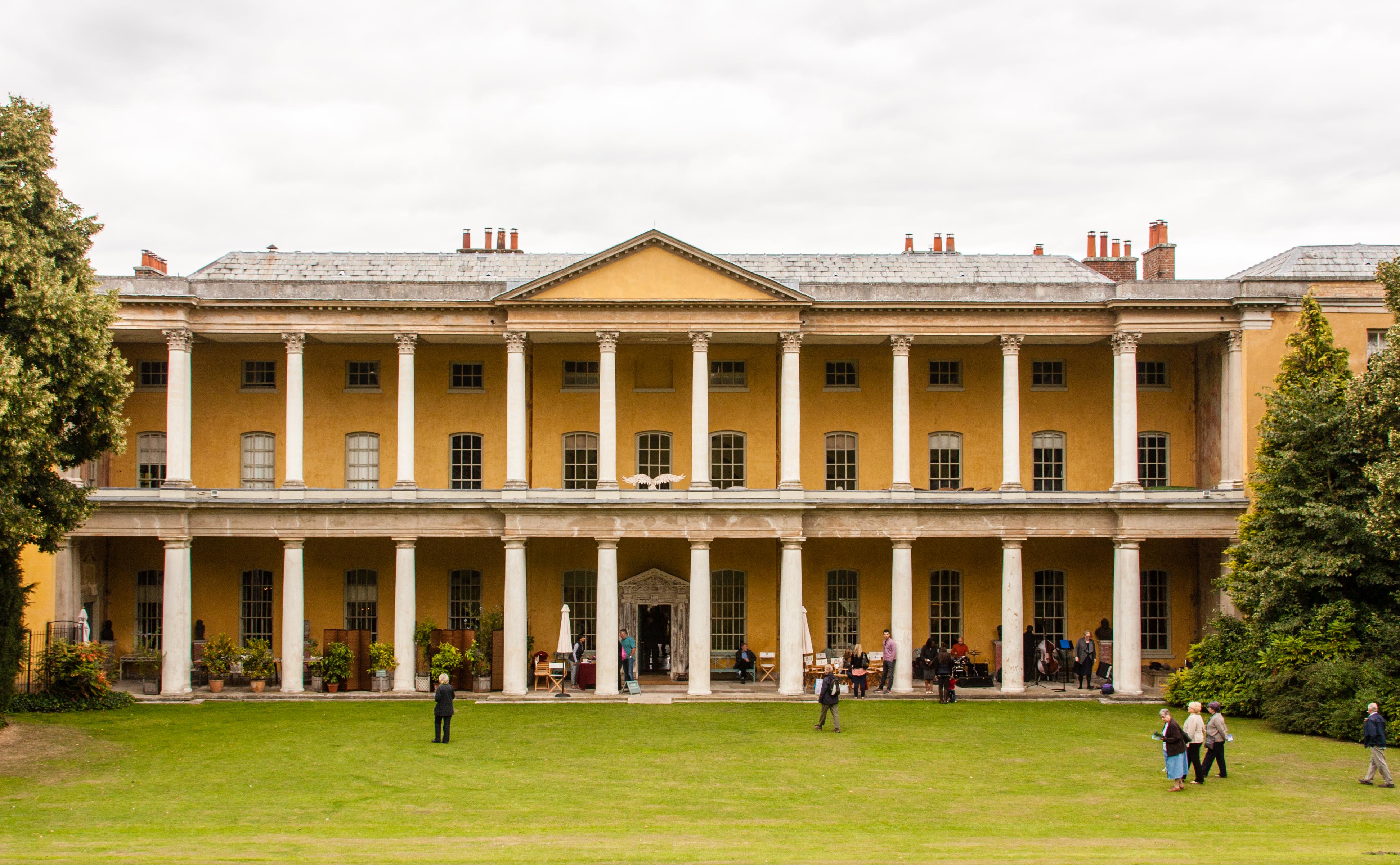|
Dashwood Baronets
There have been two baronetcies created for members of the Dashwood family, one in the Baronetage of England and one in the Baronetage of Great Britain. Both creations are extant as of 2008. Dashwood baronetcy in Baronetage of England The Dashwood baronetcy, of Kirtlington Park in the County of Oxford, was created in the Baronetage of England on 16 September 1684 for Robert Dashwood, later Member of Parliament for Banbury and Oxfordshire, with remainder, in default of male issue of his own, to the heirs male of his father. He was the son of George Dashwood, an Alderman of London and Commissioner of Revenue. George Dashwood was offered a baronetcy but did not take up the patent, and consequently a new patent was granted to his son. At the same time the widow of George Dashwood was granted the rank of a Baronet's widow. Robert Dashwood was succeeded by his grandson, James, the second Baronet. He also represented Oxfordshire in the House of Commons. On the death of James Dashwoo ... [...More Info...] [...Related Items...] OR: [Wikipedia] [Google] [Baidu] |
Sir James Dashwood, 2nd Baronet
Sir James Dashwood, 2nd Baronet (1715–1779) was an English politician who sat in the House of Commons from 1740 to 1768. Early life He was the son of Robert Dashwood, and his grandfather from whom he inherited the baronetcy was Sir Robert Dashwood, 1st Baronet; his mother was Dorothy Reade, daughter of Sir James Reade, 2nd Baronet. He was educated at John Roysse's Free School in Abingdon (now Abingdon School). He was a Steward of the OA Club in 1746. Kirtlington Park He inherited large estates in Oxfordshire, being on a Grand Tour when he came into them in 1734, and built an imposing house at Kirtlington. Kirtlington Park was constructed in the years 1742 to 1746, by William Smith of Warwick and John Sanderson, starting from plans by James Gibbs; the grounds were laid out by Lancelot Brown. Dashwood also built up a significant library, and in 1747 was paying James Lovell, the sculptor and interior decorator. In 1931 the rococo dining room was exported, and it is no ... [...More Info...] [...Related Items...] OR: [Wikipedia] [Google] [Baidu] |
Francis Dashwood, 11th Baron Le Despencer
Francis Dashwood, 11th Baron le Despencer, PC, FRS (December 1708 – 11 December 1781) was an English politician and rake, Chancellor of the Exchequer (1762–1763) and founder of the Hellfire Club. Life and career Early life Dashwood was born in Great Marlborough Street, London, in December 1708. He was the only son of Sir Francis Dashwood, 1st Baronet, and his second wife Mary, eldest daughter of Vere Fane, 4th Earl of Westmorland. Sir Francis and Mary had two children: a son, Francis, and a daughter, Rachael. Sir Francis also had two surviving daughters from his first marriage, and later two daughters and two sons from his third. Dashwood was educated at Eton College where he became associated with William Pitt the Elder. Upon the death of his father in 1724, Dashwood, who was only fifteen, inherited his father's estates and the Baronetcy of Dashwood of West Wycombe. Travels Dashwood spent his youth and early adulthood abroad, gaining a reputation for notoriety wh ... [...More Info...] [...Related Items...] OR: [Wikipedia] [Google] [Baidu] |
Far East
The Far East is the geographical region that encompasses the easternmost portion of the Asian continent, including North Asia, North, East Asia, East and Southeast Asia. South Asia is sometimes also included in the definition of the term. In modern times, the term ''Far East'' has widely fallen out of use and been substituted by Asia–Pacific, while the terms Middle East and Near East, although now pertaining to different territories, are still commonly used today. The term first came into use in European geopolitical discourse in the 15th century, particularly the British people, British, denoting the Far East as the "farthest" of the three "Easts", beyond the Near East and the Middle East. Likewise, during the Qing dynasty of the 19th and early 20th centuries, the term "Far West (Taixi), Tàixī ()" – i.e., anything further west than the Arab world – was used to refer to the Western countries. Since the mid-20th century, the term has mostly gone out of use for the region ... [...More Info...] [...Related Items...] OR: [Wikipedia] [Google] [Baidu] |
London
London is the Capital city, capital and List of urban areas in the United Kingdom, largest city of both England and the United Kingdom, with a population of in . London metropolitan area, Its wider metropolitan area is the largest in Western Europe, with a population of 14.9 million. London stands on the River Thames in southeast England, at the head of a tidal estuary down to the North Sea, and has been a major settlement for nearly 2,000 years. Its ancient core and financial centre, the City of London, was founded by the Roman Empire, Romans as Londinium and has retained its medieval boundaries. The City of Westminster, to the west of the City of London, has been the centuries-long host of Government of the United Kingdom, the national government and Parliament of the United Kingdom, parliament. London grew rapidly 19th-century London, in the 19th century, becoming the world's List of largest cities throughout history, largest city at the time. Since the 19th cen ... [...More Info...] [...Related Items...] OR: [Wikipedia] [Google] [Baidu] |
Buckinghamshire
Buckinghamshire (, abbreviated ''Bucks'') is a Ceremonial counties of England, ceremonial county in South East England and one of the home counties. It is bordered by Northamptonshire to the north, Bedfordshire to the north-east, Hertfordshire to the east, Greater London to the south-east, Berkshire to the south, and Oxfordshire to the west. The largest settlement is the city of Milton Keynes, and the county town is Aylesbury. The county has an area of and had a population of 840,138 at the 2021 census. ''plus'' Besides Milton Keynes, which is in the north-east, the largest settlements are in the southern half of the county and include Aylesbury, High Wycombe, and Chesham. For Local government in England, local government purposes Buckinghamshire comprises two Unitary authorities of England, unitary authorities, Buckinghamshire Council and Milton Keynes City Council. The Historic counties of England, historic county had slightly different borders, and included the towns of S ... [...More Info...] [...Related Items...] OR: [Wikipedia] [Google] [Baidu] |
West Wycombe
West Wycombe is a small village and civil parish in Buckinghamshire, England, famed for its manor houses and its hills. It is west of High Wycombe. The historic village is largely a National Trust property and receives a large annual influx of tourists, being the site of West Wycombe Park, West Wycombe Caves and the Mausoleum on top of West Wycombe Hill. The Mausoleum and Golden Ball above West Wycombe village are impressive local landmarks, visually dominating the village and local landscape for miles surrounding. West Wycombe Park, Caves, Mausoleum and St Lawrence's Church, West Wycombe, St Lawrence's Church were all constructed in the mid-18th century by Sir Francis Dashwood, founder of the Dilettanti Society and co-founder of the notorious Hellfire Club. History Early history The hill above West Wycombe (now the site of St Lawrence's Church and the Mausoleum) has been continuously inhabited for centuries. A British Bronze Age, Bronze Age settlement is widely believe ... [...More Info...] [...Related Items...] OR: [Wikipedia] [Google] [Baidu] |
West Wycombe Park
West Wycombe Park is a country house built between 1740 and 1800 near the village of West Wycombe in Buckinghamshire, England. It was conceived as a pleasure palace for the 18th-century libertine and dilettante Sir Francis Dashwood, 2nd Baronet. The house is a long rectangle with four façades that are columned and pedimented, three theatrically so. The house encapsulates the entire progression of British 18th-century architecture from early idiosyncratic Palladian to the Neoclassical, although anomalies in its design make it architecturally unique. The mansion is set within an 18th-century landscaped park containing many small temples and follies, which act as satellites to the greater temple, the house. The house, a Grade I listed building, was given to the National Trust in 1943 by Sir John Dashwood, 10th Baronet (1896–1966), an action strongly resented by his heir. Dashwood retained ownership of the surrounding estate and the contents of the house, most of which he ... [...More Info...] [...Related Items...] OR: [Wikipedia] [Google] [Baidu] |
Baron Le Despencer
Baron le Despencer is a title that has been created several times by writ in the Peerage of England. Creation Sir Hugh le Despenser I was a large landowner in Leicestershire, Yorkshire, Lincolnshire, and Rutland. He was appointed High Sheriff of Staffordshire and Shropshire in 1222 and High Sheriff of Berkshire in 1226 and 1238. The first creation was in 1295, when Hugh the elder Despenser was summoned to the Model Parliament. He was the eldest son of the sometime Justiciar Hugh Despenser (d. 1265), son of Sir Hugh le Despenser I (above). The sometime Justiciar was summoned in 1264 to Simon de Montfort's Parliament and is sometimes considered the first baron. Hugh the younger Despenser, son of Hugh the elder, was also summoned to Parliament in 1314, during his father's lifetime, the second creation of the title. Both elder and younger Despensers were attainted and executed in 1326, extinguishing the two creations. In 1338, Hugh le Despenser, son of Hugh the ... [...More Info...] [...Related Items...] OR: [Wikipedia] [Google] [Baidu] |
Hellfire Club
Hellfire Club was a term used to describe several exclusive Club (organization), clubs for high-society Rake (character), rakes established in Great Britain and Ireland in the 18th Century. The name most commonly refers to Francis Dashwood, 11th Baron le Despencer, Francis Dashwood's Order of the Friars of St Francis of Wycombe. Such clubs, rumour had it, served as the meeting places of "persons of quality"Ashe p. 48. who wished to take part in what were socially perceived as immoral acts, and the members were often involved in politics. Neither the activities nor membership of the clubs are easy to ascertain. The clubs allegedly had distant ties to an elite society known only as "The Order of the Second Circle".Blackett-Ord p. 46.Ashe p. 111. The first official Hellfire Club was founded in London in 1718, by Philip Wharton, 1st Duke of Wharton and a handful of other high-society friends. The most notorious club associated with the name was established in England by Francis Dash ... [...More Info...] [...Related Items...] OR: [Wikipedia] [Google] [Baidu] |
Chancellor Of The Exchequer
The chancellor of the exchequer, often abbreviated to chancellor, is a senior minister of the Crown within the Government of the United Kingdom, and the head of HM Treasury, His Majesty's Treasury. As one of the four Great Offices of State, the chancellor is a high-ranking member of the British Cabinet. Responsible for all economic and financial matters, the role is equivalent to that of a finance minister in other countries. The chancellor is now always second lord of the Treasury as one of at least six Lords Commissioners of the Treasury, lords commissioners of the Treasury, responsible for executing the office of the Treasurer of the Exchequer the others are the prime minister and Commons government whips. In the 18th and early 19th centuries, it was common for the prime minister also to serve as Chancellor of the Exchequer if he sat in the Commons; the last Chancellor who was simultaneously prime minister and Chancellor of the Exchequer was Stanley Baldwin in 1923. Formerl ... [...More Info...] [...Related Items...] OR: [Wikipedia] [Google] [Baidu] |
Winchelsea (UK Parliament Constituency)
Winchelsea was a parliamentary constituency in Sussex, which elected two Members of Parliament (MPs) to the House of Commons from 1366 until 1832, when it was abolished by the Great Reform Act. History Boundaries Winchelsea was a Cinque Port, rather than a parliamentary borough, but the difference was purely a nominal one, and it was considered an egregious example of a rotten borough. The constituency consisted of the town and parish of Winchelsea, once a market town and port but by the 19th century much reduced in importance, a mile-and-a-half inland with its harbour destroyed. In 1831, the population of the constituency was estimated at 772, and the town contained 148 houses. History of corruption The right to vote was exercised by the freemen of the town, of whom by 1831 there were just 11, even though in theory the custom was that every son of a freeman and every freeholder in the town was entitled to his freedom. With so few voters, bribery was the rule rather than th ... [...More Info...] [...Related Items...] OR: [Wikipedia] [Google] [Baidu] |





